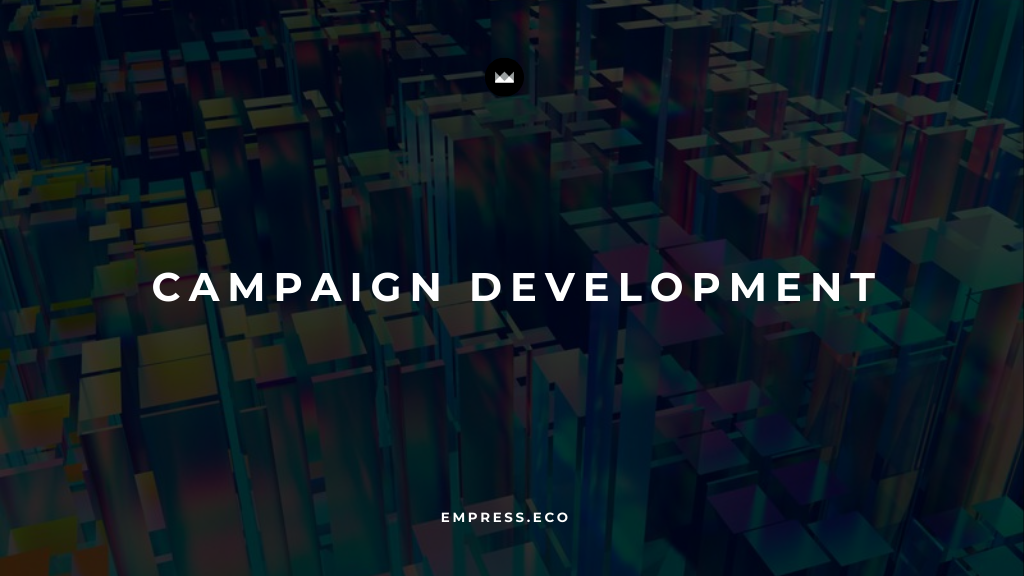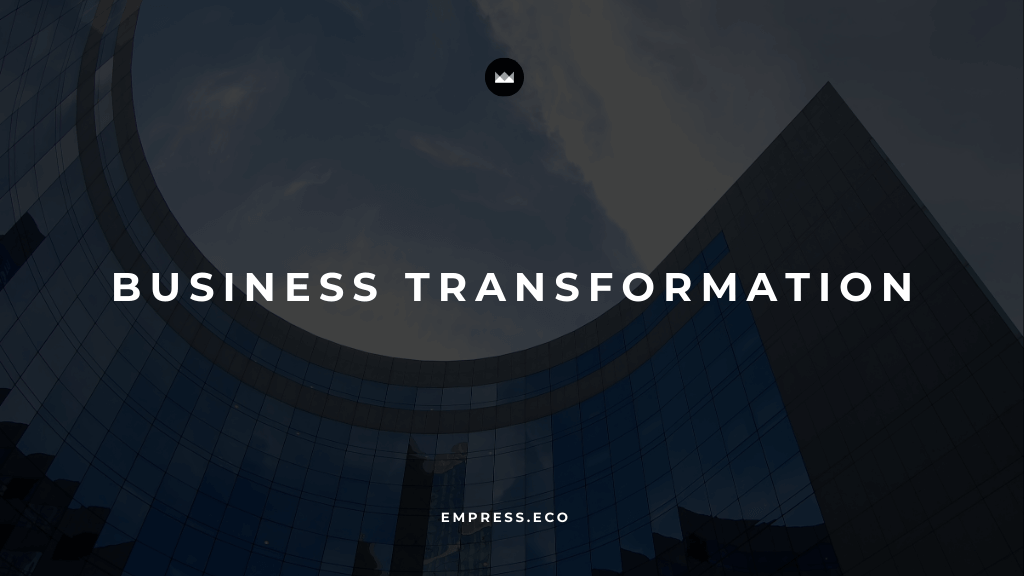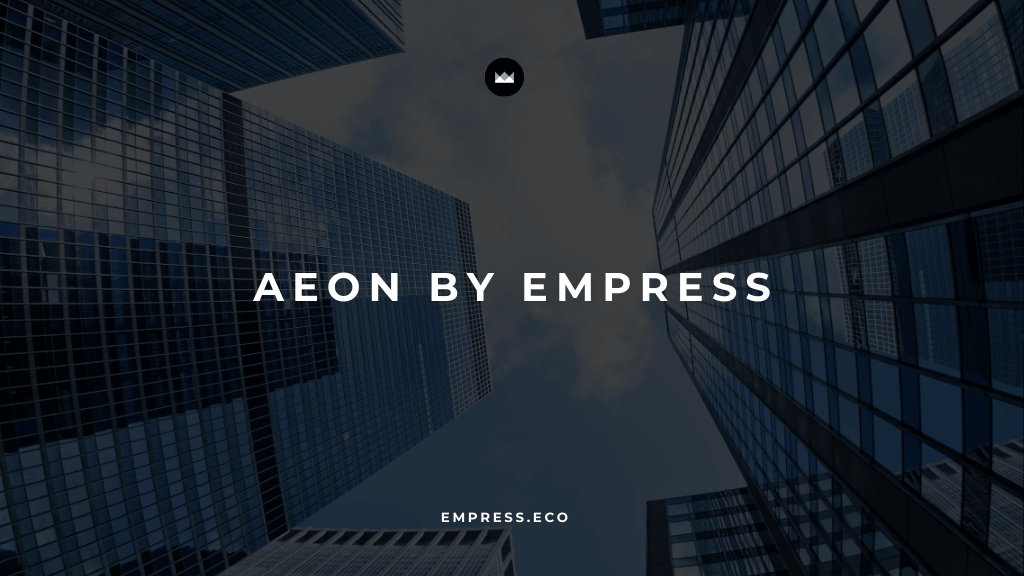
Execute High-Impact Marketing Campaigns with DADA’s Creative Strategy
Table of Contents
In today’s visually driven world, where content is consumed at a rapid pace, the effectiveness of a marketing campaign often hinges on its ability to stand out visually. Campaign development involves the strategic creation and execution of marketing initiatives that are designed to capture attention, convey key messages, and resonate with target audiences. When done right, visually impactful campaigns not only enhance brand visibility but also drive deeper engagement and foster stronger connections with consumers.
Why Visual Impact Matters in Campaign Development
Visual impact is a critical element of campaign development because humans are inherently visual creatures. Studies have shown that people are more likely to remember and engage with content that includes compelling visuals. Moreover, as digital platforms continue to prioritize visual content—whether through images, videos, or infographics—creating campaigns that leverage these elements is essential for maintaining relevance and effectiveness.
Key Benefits of Visually Impactful Campaigns
1. Increased Audience Engagement
One of the most immediate benefits of visually impactful campaigns is increased audience engagement. In a sea of text-heavy content, visuals are what make a campaign stand out. Whether it's a striking image, a captivating video, or a well-designed infographic, visuals capture attention more effectively than text alone.
Here’s how visual elements enhance engagement:
- Instant Attention: Visuals have the power to grab attention within seconds, making it more likely that your audience will stop scrolling and take notice of your content. This is particularly important on social media platforms, where users are bombarded with a constant stream of content.
- Emotional Resonance: Visuals can evoke emotions more quickly and effectively than words. A powerful image or video can convey emotions like joy, excitement, or empathy, creating a stronger connection with the audience.
- Interactive Elements: Incorporating interactive visuals, such as clickable infographics or animated elements, can further enhance engagement by encouraging the audience to interact with the content.
For instance, the “Share a Coke” campaign by Coca-Cola, which featured personalized Coke bottles with people’s names, is a classic example of a visually impactful campaign that increased engagement. The campaign encouraged consumers to find and share bottles with their names or the names of friends and family, leading to a significant increase in social media engagement and brand visibility.
2. Enhanced Brand Recognition
A strong visual identity is crucial for enhancing brand recognition. When visuals are consistent and well-designed, they help reinforce the brand’s identity, making it more recognizable and memorable to consumers.
Here’s how visual campaigns strengthen brand recognition:
- Consistent Visual Identity: By maintaining a consistent color palette, typography, and design elements across all campaign materials, you create a cohesive visual identity that audiences can easily recognize.
- Memorable Imagery: Memorable visuals are more likely to stick in the minds of consumers. When people see the same visual cues repeatedly, they start to associate those cues with your brand, which helps reinforce brand identity.
- Differentiation from Competitors: In crowded markets, visually distinctive campaigns can help your brand stand out from competitors. Unique visuals that are closely tied to your brand’s identity can differentiate you in the minds of consumers.
For example, Apple’s minimalist design aesthetic is a key part of its brand identity. The company’s campaigns consistently feature clean, simple visuals that are instantly recognizable, helping to reinforce Apple’s brand image of innovation and elegance.
3. Improved Message Retention
Visuals don’t just capture attention—they also enhance message retention. Studies have shown that people are more likely to remember information when it is presented visually rather than through text alone. This is because the brain processes visual information more efficiently and stores it in long-term memory.
Here’s how visual elements improve message retention:
- Visual Reinforcement: Visuals reinforce the key messages of your campaign by providing a visual representation of the information. For example, an infographic that illustrates the benefits of a product can help consumers remember those benefits more easily.
- Simplification of Complex Information: Visuals can simplify complex information, making it easier to understand and remember. For example, charts, graphs, and diagrams can break down data into digestible pieces that are more memorable than text-heavy explanations.
- Storytelling through Visuals: Visual storytelling can make your message more compelling and easier to recall. When your audience can visualize the story you’re telling, they’re more likely to remember it.
The World Wildlife Fund’s (WWF) “You Can’t Negotiate with Nature” campaign used powerful imagery of animals in perilous situations to communicate the urgent need for environmental action. The stark, memorable visuals helped reinforce the campaign’s message, making it more likely to resonate with viewers and stay in their minds.
4. Broader Reach Across Platforms
In today’s digital age, visually impactful campaigns have the potential for broader reach across platforms. Social media, in particular, is a visually driven space where high-quality visuals are more likely to be shared, liked, and commented on, amplifying the reach of your campaign.
Here’s how visual impact drives broader reach:
- Increased Shareability: Visually appealing content is more likely to be shared by users on social media platforms, extending the reach of your campaign beyond your immediate audience.
- Platform Optimization: Different platforms favor different types of visual content. By optimizing your visuals for each platform—whether it’s Instagram, Facebook, Twitter, or LinkedIn—you can maximize your reach and engagement across multiple channels.
- Viral Potential: Visually impactful campaigns have the potential to go viral, spreading rapidly across social media and reaching a vast audience. Viral campaigns can significantly boost brand visibility and awareness.
An example of a campaign with broad reach is the ALS Ice Bucket Challenge, which went viral on social media. The challenge involved participants dumping a bucket of ice water over their heads and sharing the video on social media, resulting in millions of people participating and sharing the content, which greatly increased awareness and fundraising for ALS research.
Implementing Effective Campaign Development
To create visually impactful campaigns that achieve your marketing objectives, it’s important to follow a structured approach. This involves defining clear objectives, developing a strong visual identity, leveraging high-quality visuals, incorporating storytelling elements, and optimizing for multiple platforms.
Step 1: Define Clear Objectives
The first step in any campaign development process is to define clear objectives. What do you want to achieve with this campaign? Whether it’s increasing brand awareness, driving sales, or engaging a specific audience segment, your objectives will guide the creative process and inform every decision you make.
Here’s how to define your campaign objectives:
- Specific Goals: Set specific, measurable goals that align with your broader marketing strategy. For example, if your goal is to increase brand awareness, you might set a target for the number of social media impressions or shares.
- Target Audience: Identify the target audience for your campaign. Understanding who you’re trying to reach will help you tailor your visuals and messaging to resonate with that audience.
- Key Messages: Determine the key messages you want to communicate. These messages should be clear, concise, and aligned with your brand’s values and objectives.
- Success Metrics: Define how you will measure the success of the campaign. This could include metrics like engagement rates, conversion rates, reach, or ROI.
For example, if you’re launching a new product, your objective might be to generate excitement and drive pre-orders. Your key metrics might include the number of pre-orders, social media mentions, and website traffic generated by the campaign.
Step 2: Develop a Strong Visual Identity
A strong visual identity is crucial for creating a cohesive and recognizable campaign. Your visual identity should reflect your brand’s overall aesthetic and messaging, creating a consistent look and feel across all campaign materials.
Here’s how to develop a strong visual identity:
- Color Palette: Choose a color palette that reflects your brand’s personality and resonates with your target audience. Colors can evoke emotions and set the tone for your campaign. For example, bright, bold colors might convey energy and excitement, while muted tones might suggest sophistication and elegance.
- Typography: Select typography that aligns with your brand’s voice and is easy to read. Consistent typography helps create a unified visual identity across all campaign materials.
- Imagery: Use imagery that reflects your brand’s values and resonates with your audience. High-quality photography, illustrations, and graphics can enhance the visual appeal of your campaign.
- Design Elements: Incorporate design elements, such as logos, icons, and patterns, that are consistent with your brand’s identity. These elements should be used consistently across all campaign materials to reinforce brand recognition.
For example, Nike’s “Just Do It” campaign consistently uses bold, impactful imagery of athletes, paired with simple, powerful typography. This strong visual identity not only reinforces the brand’s message of empowerment and determination but also makes the campaign instantly recognizable.
Step 3: Leverage High-Quality Visuals
Investing in high-quality visuals is essential for creating a visually impactful campaign. Professional-grade images, videos, and graphics can significantly enhance the effectiveness of your campaign by making it more engaging and credible.
Here’s how to ensure your visuals are top-notch:
- Professional Photography: Use professional photography to create high-quality images that are visually striking and relevant to your campaign’s message. Avoid using stock photos that may feel generic or overused.
- Video Production: Invest in professional video production to create high-quality videos that tell your brand’s story in a compelling way. Video content is particularly effective at capturing attention and conveying complex messages.
- Graphic Design: Hire skilled graphic designers to create custom graphics, infographics, and illustrations that enhance your campaign’s visual appeal. Well-designed graphics can make your content more engaging and easier to understand.
- Consistency Across Visuals: Ensure that all visuals are consistent with your brand’s visual identity and the campaign’s overall aesthetic. This consistency helps reinforce brand recognition and create a cohesive experience for the audience.
For example, Airbnb’s “Live There” campaign used high-quality visuals of authentic travel experiences to convey the message that staying in an Airbnb is more like living in a local community than staying in a hotel. The use of professional photography and video helped make the campaign visually appealing and emotionally resonant.
Step 4: Incorporate Storytelling Elements
Storytelling is a powerful tool in campaign development, especially when combined with visual elements. A strong narrative can make your campaign more engaging, relatable, and memorable.
Here’s how to incorporate storytelling into your campaign:
- Create a Narrative Arc: Develop a story with a clear beginning, middle, and end. Your campaign should take the audience on a journey, whether it’s the story of your brand, a customer’s experience, or the impact of your product or service.
- Use Characters and Conflict: Introduce characters that your audience can relate to, and present a conflict or challenge that they need to overcome. This creates tension and keeps the audience engaged.
- Highlight the Resolution: Show how your brand or product provides the solution to the conflict. This reinforces the key message of your campaign and encourages the audience to take action.
- Visual Storytelling: Use visuals to enhance the narrative and convey emotions. For example, a video that tells the story of a customer’s journey with your product can be more impactful than text alone.
A great example of storytelling in a campaign is Dove’s “Real Beauty” campaign, which challenged conventional beauty standards by telling the stories of real women and celebrating their natural beauty. The campaign used powerful visuals and personal narratives to connect with the audience on an emotional level.
Step 5: Optimize for Multiple Platforms
To maximize the reach and impact of your campaign, it’s important to optimize your visuals for multiple platforms. Different platforms have different requirements and audiences, so your visuals need to be adaptable.
Here’s how to optimize your visuals for different platforms:
- Social Media Optimization: Each social media platform has its own specifications for image and video sizes. Ensure that your visuals are optimized for the specific dimensions and formats required by platforms like Instagram, Facebook, Twitter, and LinkedIn.
- Responsive Design: Ensure that your visuals look great on all devices, including desktops, tablets, and smartphones. Responsive design is crucial for reaching a mobile audience and providing a seamless experience across platforms.
- Cross-Platform Consistency: While your visuals should be optimized for each platform, they should also be consistent in style and messaging. This ensures that your campaign feels cohesive, regardless of where the audience encounters it.
- Platform-Specific Content: Consider creating platform-specific content that leverages the strengths of each platform. For example, Instagram Stories might be used for behind-the-scenes content, while LinkedIn could be used for more professional, industry-focused visuals.
For example, the #OptOutside campaign by REI, which encouraged people to spend time outdoors instead of shopping on Black Friday, was optimized for various platforms, including social media, email, and their website. The visuals were tailored to each platform’s format but maintained a consistent message and aesthetic across all channels.
Challenges and Considerations in Campaign Development
While developing visually impactful campaigns offers numerous benefits, there are also challenges that need to be addressed. Understanding these challenges and planning accordingly is key to successful execution.
1. Balancing Creativity and Consistency
One of the biggest challenges in campaign development is balancing creativity and consistency. While it’s important to be creative and innovative, it’s equally important to maintain consistency with your brand’s overall visual identity.
To balance creativity and consistency:
- Set Clear Guidelines: Develop clear brand guidelines that outline the visual elements, tone, and messaging that should be consistent across all campaigns. These guidelines will help ensure that creativity is aligned with the brand’s identity.
- Allow for Flexibility: While consistency is important, it’s also important to allow for some flexibility in how visuals are executed. Encourage creative experimentation within the framework of your brand guidelines.
- Review and Approve: Implement a review and approval process to ensure that all visuals align with the brand’s identity and campaign objectives before they are released.
2. Resource Allocation
Creating visually impactful campaigns can be resource-intensive, requiring investment in time, budget, and expertise. It’s important to allocate resources effectively to ensure that your campaign is executed to the highest standard.
To manage resources effectively:
- Prioritize Key Elements: Identify the key visual elements that will have the greatest impact on your campaign’s success and allocate resources accordingly. This might include hiring a professional photographer, investing in video production, or working with a graphic designer.
- Budget Wisely: Develop a realistic budget that accounts for all aspects of the campaign, including design, production, and distribution. Be sure to factor in unexpected costs and allocate funds for contingencies.
- Leverage Partnerships: Consider partnering with other brands, agencies, or influencers to share resources and amplify the reach of your campaign. Collaborations can bring additional expertise and creativity to the project.
3. Measuring Success
Evaluating the effectiveness of visually impactful campaigns can be complex. It’s important to establish clear metrics and use analytics tools to assess engagement, reach, and overall impact.
To measure the success of your campaign:
- Set Clear KPIs: Define the key performance indicators (KPIs) that will measure the success of your campaign. This could include metrics like engagement rates, social media shares, website traffic, conversion rates, or return on investment (ROI).
- Use Analytics Tools: Leverage analytics tools to track the performance of your campaign across different platforms. Tools like Google Analytics, social media insights, and marketing automation software can provide valuable data on how your visuals are performing.
- Gather Feedback: Collect feedback from your audience through surveys, focus groups, or social media comments to gain insights into how your campaign is being received and where improvements can be made.
- Analyze Results: Use the data collected to analyze the effectiveness of your campaign. Identify what worked well and what didn’t, and use these insights to inform future campaigns.
Conclusion: The Power of Visually Impactful Campaigns
In today’s visually driven digital landscape, creating and executing visually impactful campaigns is essential for businesses looking to engage audiences, strengthen brand recognition, and drive growth. By leveraging high-quality visuals, storytelling, and strategic optimization, companies can create campaigns that not only capture attention but also resonate with consumers on a deeper level.
In summary:
- Increased audience engagement is achieved by using visuals that capture attention and evoke emotions, making the campaign more memorable and impactful.
- Enhanced brand recognition is driven by a strong visual identity that is consistently applied across all campaign materials, making the brand more recognizable and memorable.
- Improved message retention is achieved through visual elements that reinforce key messages and simplify complex information, making it easier for audiences to remember and recall.
- Broader reach across platforms is facilitated by optimizing visuals for different platforms and encouraging shareability, increasing the campaign’s visibility and impact.
By following the steps outlined in this guide—defining clear objectives, developing a strong visual identity, leveraging high-quality visuals, incorporating storytelling elements, and optimizing for multiple platforms—you can create visually impactful campaigns that not only captivate your audience but also drive long-term success for your brand. As digital platforms continue to evolve, the importance of visually impactful campaigns will only grow, making it essential for businesses to stay ahead of the curve and embrace the power of visual communication.
Empress Newsletter
Join the newsletter to receive the latest updates in your inbox.







